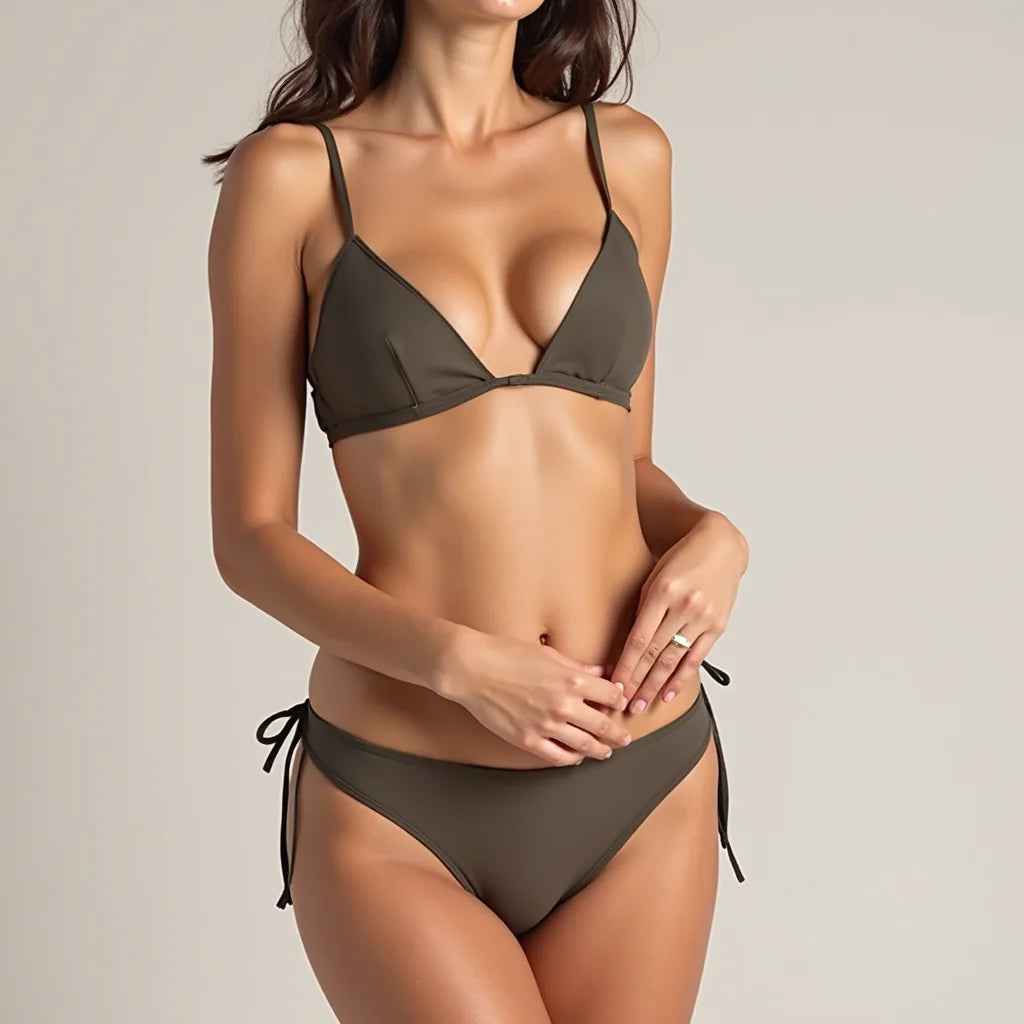
Womens Swimwear Guide to Flattering Fits for Every Body
Share
Updated on: 2025-08-29
Table of Contents
- A friendly introduction to women’s swimwear and fit
- Essential tips for women’s swimwear
- How to choose women’s swimwear size and style: a step-by-step guide
- Women’s swimwear summary and key takeaways
- Women’s swimwear: common questions answered
- About Iyanka — author of this women’s swimwear guide
A friendly introduction to women’s swimwear and fit
Choosing women’s swimwear can feel simpler when you focus on comfort first, then style. Within the first try-on, you may notice how the fabric supports, how straps sit, and how the suit moves when you reach or bend. Whether you prefer womens swimsuits designed for sun lounging or ladies swimwear made for active laps, a few small checks help you find a reliable fit. This guide walks through essential tips, a clear step-by-step process, and answers to key questions about sizing, shape, tummy control, and chlorine resistance.
There is no single “best” suit for everyone’s needs. Some may enjoy bikini sets for women that allow mixing sizes for top and bottom. Others may choose one piece swimsuits for women that provide uniform coverage and a smooth silhouette. With a little guidance, you can match your preferences to the right fabric, design details, and supportive features.
Essential tips for women’s swimwear
- Start with comfort. If a suit feels good when you stand, sit, stretch, and walk, it will likely feel good in the water as well.
- Check adjustability. Look for adjustable straps, multi-hook closures, and ties that allow gentle fine-tuning.
- Mix sizes when possible. Many bikini sets for women allow different top and bottom sizes, which can improve overall fit.
- Think about activity. For lap swimming, a secure neckline and firm straps help the suit stay in place.
- Consider fabric. For frequent pool use, chlorine resistant womens swimwear for lap swimming may maintain color and shape longer.
- Explore support features. Soft cups, underbands, and power-mesh panels can provide a stable feel without excess pressure.
- Use light compression for shape. The best womens swimwear for tummy control often uses gentle compression with flattering ruching.
- Test coverage in motion. Lift your arms, squat, and twist. The suit should not ride up, gap, or pinch.
- Care gently. Rinse in cool water after each swim, and lay flat to dry out of direct sun to help preserve elasticity.
- Choose styles you enjoy. One piece swimsuits for women and two-piece options both offer beautiful possibilities; let your comfort lead the way.
If you would like to explore a wide range of styles, you might enjoy browsing Bikinis or viewing All products for inspiration.
How to choose women’s swimwear size and style: a step-by-step guide
Set your swim goals and comfort preferences
Begin with how you plan to wear the suit. For laps, you may prefer streamlined cuts and firm straps. For relaxed beach days, you might enjoy softer fabrics, stylish details, or mix-and-match sets. Note your coverage preferences for bust, tummy, and seat. These choices will guide the rest of the process smoothly.
Take accurate body measurements
Measure your bust (around the fullest part), underbust (snug band area), waist (natural crease), and hips (fullest part). Use a soft measuring tape and keep it level. Record each number. Even small differences can help you find the most comfortable size in womens swimsuits and ladies swimwear.
Compare measurements to brand size charts
Check the brand’s size chart and match your measurements. If you are between sizes, consider the fabric’s stretch and your support preference. For two-pieces, many brands allow different sizes for tops and bottoms, which can be helpful. When in doubt, choose the size that aligns with your largest measurement, then use adjustable features to refine the fit.
Decide between one piece swimsuits and bikini sets
Both options can be comfortable and flattering. One piece swimsuits for women often feel secure for movement and can create a smooth line. Bikini sets for women make it easier to personalize top and bottom sizing, and they offer flexibility for mixing styles and coverage levels. Consider neckline shape, leg openings, and back design to match your comfort needs.
Match features: tummy control, chlorine resistance, and support
If gentle shaping feels helpful, the best womens swimwear for tummy control often includes soft power-mesh and subtle ruching. For frequent pool time, chlorine resistant womens swimwear for lap swimming may help the suit maintain its color and structure. Look for details like wider straps, supportive underbands, and secure closures. For warm-ups or to-and-from the pool, coordinated athletic layers can be practical; you could also consider simple active pieces from Sports sets for comfortable cover and movement.
Do a movement and comfort test
At home, try a short movement test: lift your arms, bend, twist, and walk. The suit should stay in place without cutting in or gaping. Straps should lie flat without digging. If something pinches or shifts, gentle adjustments can help, or a different size or style may be more comfortable.
Plan simple care for longer wear
Rinse the suit in cool water after each swim to help remove chlorine and salt. Press out water with a towel and lay flat to dry in the shade. Avoid wringing and high heat. With this routine, many suits keep their shape and color longer.
For a light extra layer to and from the water, you could try a breathable knit cover-up such as this cover-up blouse that is easy to slip on and off.
Women’s swimwear summary and key takeaways
Prioritize comfort, then style. Take measurements, compare size charts, and consider where you will swim most. One piece swimsuits for women can feel secure and smooth, while bikini sets for women offer flexible sizing. If you swim in pools often, chlorine-resistant fabrics may help. For gentle shaping, look for power-mesh and ruching that support without feeling tight. With a brief movement test and simple care, your chosen suit can serve you well for many swims.
Women’s swimwear: common questions answered
How do I choose the right size in womens swimwear?
Measure bust, underbust, waist, and hips, then compare to the brand’s size chart. If you are between sizes, consider the fabric and your preference for support. You may size up for comfort or choose adjustable straps and ties to fine-tune the fit. Two-piece sets can be helpful if your top and bottom sizes differ. If possible, read fit notes from the brand, as some styles are designed with more stretch or higher compression.
What swimwear styles are most flattering for different body types?
Comfort is the most flattering feature for everyone. Beyond that, soft V-necks can feel open without being revealing, square necklines can provide balance, and halter ties allow gentle adjustment. High-waist bikini bottoms and ruching can offer easy shaping at the midsection. For more movement, racerback or wide straps help with support. If you prefer a smooth, continuous line, many find that one piece swimsuits for women create a calm, streamlined look.
What is chlorine resistant womens swimwear for lap swimming?
These suits are typically made with fabrics designed to handle repeated pool exposure, helping them retain color and elasticity longer than standard blends. If you swim in pools often, choosing chlorine resistant womens swimwear for lap swimming may be a practical option. Rinsing your suit in cool water after each swim and drying it flat away from direct sun may further support longevity.
How do I help a swimsuit last longer?
Rinse in cool water after each swim, avoid wringing, and dry flat in the shade. Rotate between two suits if you swim often, allowing each one to fully dry. Store your suit flat and avoid rough surfaces that can snag fabric. These gentle practices may help maintain stretch and color over time.
About Iyanka — author of this women’s swimwear guide
About the Author
Iyanka is a fashion writer and product specialist who focuses on fit, fabric, and comfort across women’s apparel and swimwear. She enjoys helping readers make calm, confident choices with simple, practical tips. Thank you for spending time with this guide — wishing you many relaxed and enjoyable swims.
The content in this blog post is intended for general information purposes only. It should not be considered as professional, medical, or legal advice. For specific guidance related to your situation, please consult a qualified professional. The store does not assume responsibility for any decisions made based on this information.
